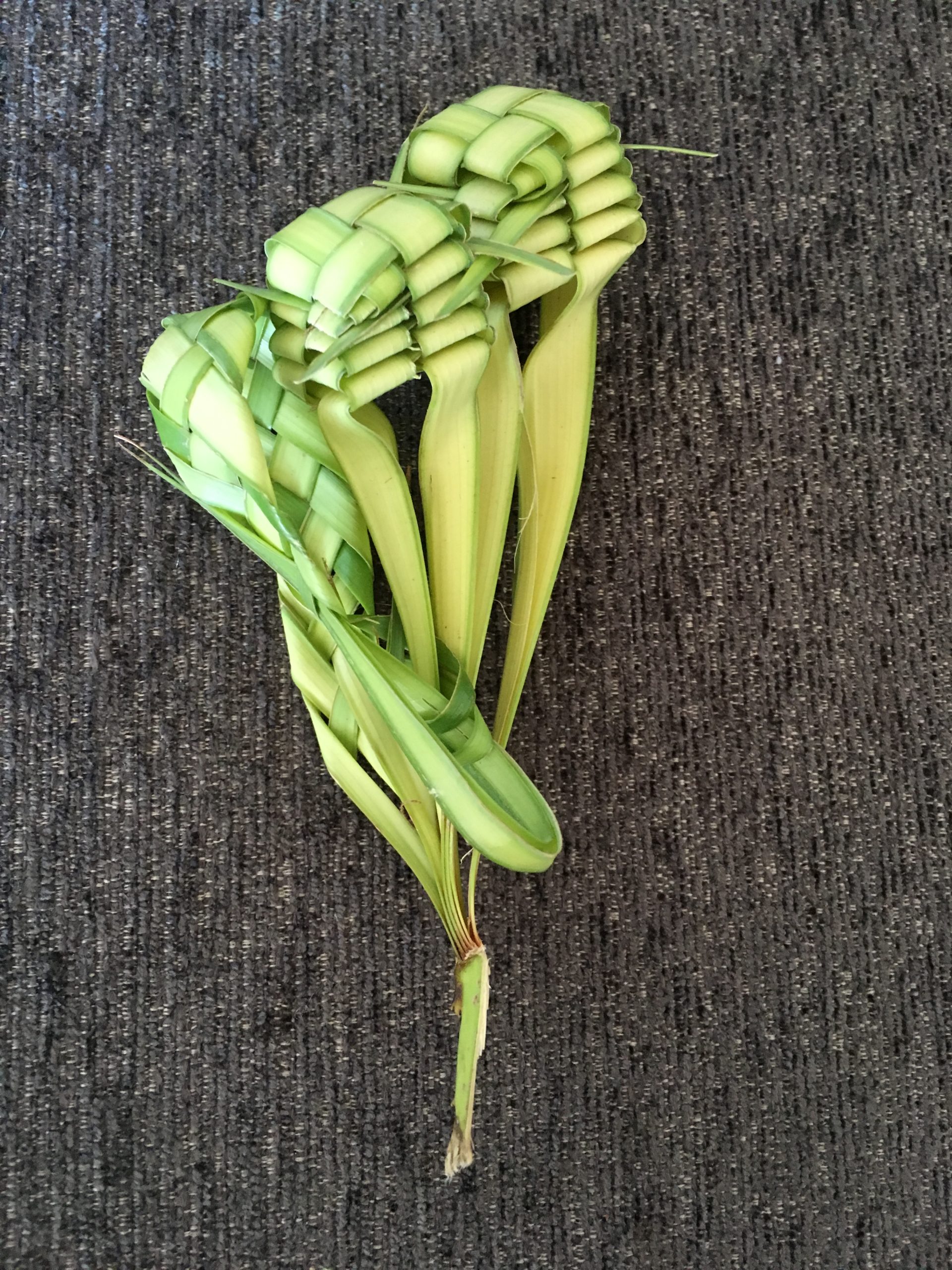Sixth Sunday of Lent (Palm Sunday) March 28, 2021
We are Douglas and Dana, Associates of the Congregation of Notre Dame Sisters at Our Lady of Peace parish, Innisfail, Alberta.
Palm Sunday (the lead into Holy Week) presents us with many dramatic and contrasting scenes that stir our emotions. We hold and wave palm branches as a symbol of victory, triumph, peace, and eternal life. We carry palm branches as a tribute of waving joy, before Christ, victorious over death – also as a symbol of our fickleness, betraying Christ unto His Death.
We begin the celebration of Jesus’ Passion – His entry into the city of Jerusalem for our salvation. We shout and sing “Hosanna! Hosanna in the highest heaven.” Hosanna in Hebrew literally means, “I beg you to save”, or “please deliver us”. The first reading from Isiah 50.4-7 speaks of the suffering servant being insulted, struck and spit on, yet sets his face like flint, determined to stoically finish his quest. Psalm 22 further speaks of suffering, being mocked, and scorned. The Jewish people of the time, under the heel of the Roman Empire were expecting a Conquering King to rescue them from their suffering. Jesus is entering into his Passion, coming, not as a royal Conquering King, but as a humble, Suffering Servant. Many people spread their cloaks on the road or spread leafy branches they had cut from the fields, to welcome Jesus on his entry into Jerusalem. The image of Jesus, the ‘King’ riding on a donkey and not some royal coach leads us into recognizing Him as a Suffering Servant – a different kind of king.
In the Gospel of Mark, we see Jesus at Bethany, two days before the Passover, in the house of Simon the leper. Here Jesus is anointed with ointment of nard by a woman who he praises “for she has anointed my body beforehand for its burial”. At the same time, Judas Iscariot goes to the chief priests with a plan to betray Jesus. At the Passover meal, Jesus reveals more of his coming suffering by announcing that one of his disciples at the table will betray him. Jesus shocks the disciples again by saying that they will all scatter and run away from any hints of suffering. Peter announces that he will never deny Jesus, and all of them say the same.
After the meal, Jesus and his disciples go to the Garden of Olives, or ‘Gethsemane’ to pray and rest. Here Jesus enters further into his Passion. This ‘garden’ or place of rest contrasts directly with further suffering Jesus endures. The olive tree symbolizes the eternal link between man and the earth. The olive branch is a symbol of peace, wisdom, fertility, prosperity, health, luck, victory, stability, and tranquility. Olive oil, in the symbolism of the Bible, is a picture of the presence of the Spirit of God. Oil was used for the anointing of priests and kings. Olive oil is produced under pressure. The more pressure, the more oil. Jesus was certainly ‘under pressure’ moving into his Passion. Yet, what a better symbolic place to be with God and pray than the Garden of Olives. Gethsemane is derived from Hebrew ‘Gat’ meaning wine press and ‘Shmanin’ meaning oils. A literal translation of Gat Shmanim would be “winepress of oils”.
The suffering and sacrifice of Jesus allowed the Holy Spirit to be poured out on those who believe in Him. Jesus is betrayed by one of his own followers and is taken away to enter deeper into His Passion and suffering to be crucified on the cross and finally rise triumphantly from the tomb. This is a strong reflection on what Jesus did for our salvation.
